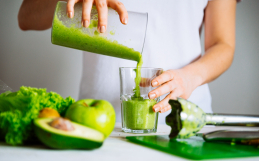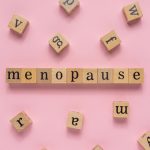Do you love buying new clothes? We’re right there with you! Fashion is a great outlet for self-expression. But what if we told you your exciting new outfit is making you sick? Today we’re taking a deep dive into the toxic truth about clothes and how you can protect yourself.
The truth is, shopping comes with a minefield of chemicals that make your clothes wrinkle-free, odor-resistant, sweat-wicking, and give them vibrant colors. And these toxic chemicals aren’t just staying in your clothes. They outgas into the air you breathe and absorb into your skin while you wear them.
Popular fast fashion brands like Shein and Temu are the worst offenders, with little to no chemical regulation. The contents of our clothing remain a mystery to many of us because let’s face it: our clothes don’t come with an ingredient list. But the impact of these chemicals isn’t just a mystery to us. Any long-term effects of exposure to these chemicals are a big question mark for researchers—especially for women’s health.
This is a big deal because the fashion industry disproportionately impacts women. The pressure is always on for women to look “presentable” and keep up with trends. As women, we’re targeted directly by fashion marketing, always encouraged to buy more.
Men, on the other hand, can get by with just a few items. Plus brands often construct men’s clothing from higher-quality materials (no see-through shirts here!). So this pressure for women to have a trendy wardrobe means women are also exposed to more of these chemicals than men.

What chemicals are found in clothes? Some of the toxic chemicals in clothing include:
- PFAS and PFCS
- BPA
- Phthalates
- Heavy metals like nickel, lead, and cadmium
- Formaldehyde
- Flame retardants
- Harmful dyes
Many of these substances are known neurotoxins and endocrine disruptors. Repeated exposure to them can weaken immune response and trigger conditions and symptoms like:
- Endometriosis
- Lupus
- Sjögren’s
- Insulin resistance
- Mood disorders like depression and anxiety
- Hair loss
- Skin issues like persistent rashes, hives, dry patches, and redness
- Shortness of breath
- Digestive issues
- Trouble sleeping through the night
We avoid these substances in our food, but we’re unknowingly wearing our way into serious health problems when we choose fast fashion over natural alternatives.
And it’s not just brand-new clothing that’s a risk. Washing new clothes may seem like a solution, but it can create a bigger problem. With each wash, these substances become more deeply ingrained in the fibers of your clothing. This means each time you wear them, you’re getting more exposure.
So what can we do to protect ourselves?
The good news is: there are small, easy steps that minimize your exposure to these toxic chemicals. To protect your (and your family’s) health, you can:
- Buy natural fibers: Look for clothing made from cotton, silk, wool, or linen. Semi-synthetics like modal, lyocell, bamboo, and rayon are also great options. This is also a good rule of thumb for your home textiles like rugs, sheets, and towels.
- Embrace muted colors: Reduce clothes with bright, super-saturated colors, and instead look for more muted colors like earth tones, whites, and pastels.
- Search for certifications: Find brands that use Oeko-Tex certified fabrics or work with BlueSign. These are better indicators of chemical management than organic labels, which focus on farming practices instead of manufacturing.
- Steer clear of treated fabrics: Avoid clothing labeled as anti-odor, water-resistant, easy-care, stain-proof, anti-wrinkle, or sweat-wicking. These results are all achieved with harmful chemicals.
- Air out new clothes: Turn new clothing inside out and hang them outside (preferably in the sun) to let them air out and release any lingering chemicals. The sun’s UV rays help eliminate odors, bacteria, and chemical residues. Leave them out until any chemical smell is gone (or almost gone). Jo airs her new clothes outside for 2 solid weeks if they’re really smelly!
- Wash your secondhand clothing: Thrifting is more sustainable, but secondhand clothes may have gone through years of harsh laundry detergents or dry-cleaning chemicals. Look for natural fibers when you thrift and wash them when you bring them home.
- Consider spot cleaning: This may sound crazy, but you don’t need to throw natural fibers in the wash! Use a cleaning and deodorizing solution made from vinegar and water or vodka and water to spritz any areas that get a lot of sweat and bacteria. Air them out in the sun until dry and they’ll be good to go.
- Stop using scented laundry products: Strongly scented laundry products use chemicals like phthalates that coat clothing and get absorbed through your skin. Skip scented detergents and look for gentle, unscented detergents (we like Molly’s Suds) instead. If you use dryer sheets try dryer wool balls as a natural alternative.
- Shop brands with strong chemical management: Search for companies that are proven to use safer chemical practices (via Oeko-Tex or BlueSign), like Organic Basics, MATE, Levi’s, and even H&M.
Now that you’re armed with information, you can shop safely – because what you wear should make you feel good inside AND out!
Just like food, you can learn to be a “label detective” for the clothes you buy. You can take control of your health by finding brands that use safer manufacturing processes.
So get out there and shop mindfully! And feel free to reach out to us if you need more tips for safe shopping. We love hearing from you.
With love and chemical-free clothes,
The Conscious Cleanse Team
If you liked learning about detoxing your wardrobe, we invite you to join our online community! When you sign up you’ll receive regular healthy lifestyle tips and new recipes. As a welcome gift, we’ll send you our FREE Taste of the Conscious Cleanse eCookbook to get you started with more delicious and healthy recipes.
Welcome! We’re so glad you’re here.






